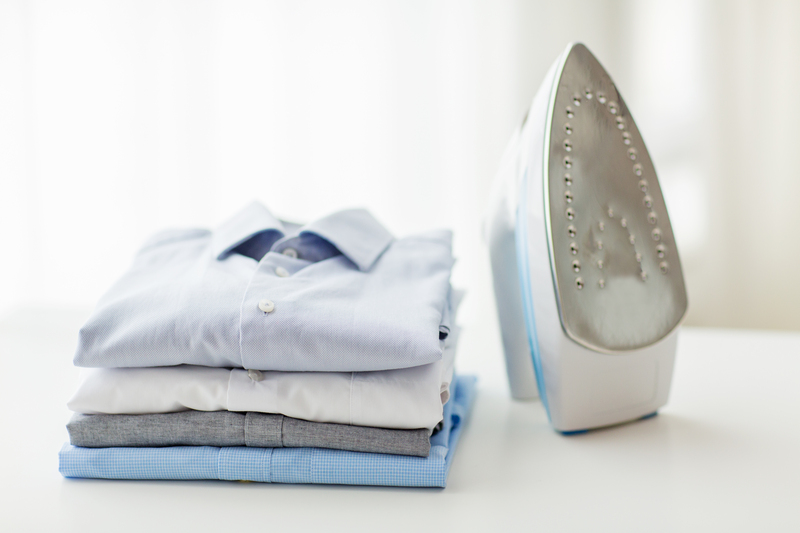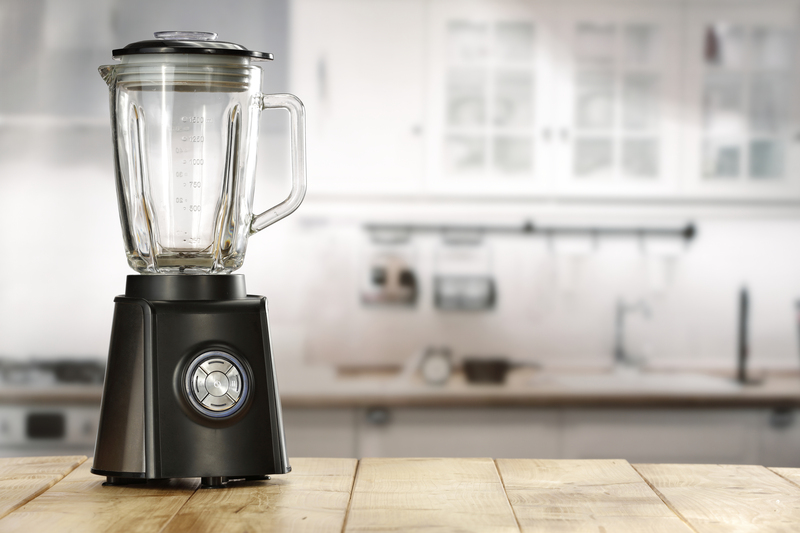Essential Insights on Steam Cleaning Leather Sofas
Posted on 11/09/2025
Essential Insights on Steam Cleaning Leather Sofas
Steam cleaning is renowned for its effectiveness in deep cleaning and sanitizing various surfaces. However, when it comes to leather sofas, a prized possession in many homes, the question arises: is steam cleaning suitable for leather? This comprehensive guide offers you essential insights on steam cleaning leather sofas, giving you the complete knowledge you need to clean your prized leather furniture properly, safely, and effectively.

Understanding Leather: A Delicate and Valuable Material
Leather is not just another upholstery fabric. It is a natural material, cherished for its luxurious feel, durability, and timeless aesthetic appeal. Unlike fabric, leather requires specific care and attention, as it can easily lose oils, dry out, crack, or get stained from improper cleaning methods. That's why understanding the basics of leather is crucial before attempting any cleaning process, especially steam cleaning your leather sofa.
Types of Leather Used in Sofas
- Full-Grain Leather: The highest quality, durable, and has a natural look. It's less processed and more sensitive to moisture.
- Top-Grain Leather: Slightly buffed to remove imperfections, smooth and more uniform. Can handle cleaning better but still sensitive to excessive heat and moisture.
- Corrected-Grain Leather: Treated for aesthetics but less natural. Protective coatings make it a bit more resilient to steam cleaning.
- Bonded Leather: Composed of leather scraps and polyurethane. It's the least durable and more vulnerable to damage from heat or moisture.
Understanding which type of leather your sofa has is the first essential insight before considering any cleaning routine. Always check the manufacturer's label or ask the retailer for cleaning recommendations tailored to your sofa's leather type.
What Is Steam Cleaning?
Steam cleaning uses heated water vapor to loosen dirt, kill bacteria, and sanitize surfaces. This eco-friendly method is highly effective on materials like fabric, tiles, and hard surfaces. When used on leather sofas, though, there are special precautions to consider due to leather's sensitivity to temperature and moisture.
How Steam Cleaners Work
- They heat water to temperatures up to 200?F (93?C) to produce steam.
- The steam is then directed through a nozzle or brush to the target surface.
- The heat and moisture break down dirt, grime, and bacteria.
- The residue is wiped away with a clean cloth or vacuumed, depending on the cleaner type.
While these steps may seem straightforward, applying them to leather furniture is more complex. Here are some crucial insights for steam cleaning leather sofas specifically.
Is Steam Cleaning Safe for Leather Sofas?
The answer is: It depends. Leather is porous and can absorb moisture, leading to warping, cracking, or discoloration if exposed to excessive heat or water. However, with proper techniques and the right equipment, steam cleaning leather furniture can be both effective and safe.
Manufacturer Recommendations
- Always check the care label: Many brands clearly state whether their leather can withstand steam cleaning.
- Consult with professionals: When in doubt, professional cleaning services have specialized equipment and knowledge for delicate leather care.
Risks of Steam Cleaning Leather Sofas
- Moisture Damage: Too much moisture can cause leather to become stiff or crack.
- Heat Damage: High heat can warp and discolor leather.
- Loss of Natural Oils: Steam can strip away the oils that keep leather supple, resulting in a dry, brittle surface.
- Mold and Mildew: Moisture that seeps into the leather can foster mold growth, especially if the sofa isn't dried thoroughly.
Despite these risks, many professionals use steam cleaning on leather with success by employing strict control over steam application and immediate drying methods. For optimal results, follow the best practices and essential insights for steam cleaning leather sofas outlined below.
Best Practices: Steam Cleaning Leather Sofas
If you decide to proceed with steam cleaning your leather sofa, the following tips will help you protect and preserve your sofa's beauty:
1. Vacuum First
Remove loose dirt and debris with a soft-bristled vacuum attachment. Dust and particles can scratch the leather if scrubbed during steam cleaning.
2. Test in an Inconspicuous Area
Before cleaning large or visible areas, always test the steam cleaner on a hidden spot to check for adverse reactions like discoloration or texture changes.
3. Use the Right Attachment
Many steam cleaners come with microfiber or soft cloth attachments. These reduce direct contact between the steam and the leather, minimizing the risk of heat damage.
4. Control the Steam Output
Avoid high heat and excessive wetness. Set the steam cleaner to the lowest effective temperature and ensure a minimal flow. You want only a light mist, not soaked leather.
5. Wipe Down Immediately
After steaming a section, immediately wipe it with a dry, soft microfiber cloth. This prevents moisture from seeping in and helps keep the leather supple.
6. Work in Small Sections
Clean the sofa section by section, drying thoroughly as you go. This attention to detail prevents water marks and ensures the entire surface is sanitized without damage.
7. Condition the Leather
After cleaning, apply a high-quality leather conditioner to restore moisture and maintain flexibility. Conditioning should follow every deep-cleaning session to keep the leather looking its best.
8. Allow to Air Dry Thoroughly
Ensure the sofa is completely dry before use. Open windows or use fans if needed.
Benefits of Steam Cleaning Leather Sofas
When done correctly, steam cleaning can offer several advantages for your leather sofas:
- Deeper Clean: Steam penetrates into crevices that regular dusting can't reach.
- Sanitization: The heat of the steam effectively kills bacteria, dust mites, and other allergens.
- Eco-Friendly: No harsh chemicals needed, making it a greener alternative.
- Restores Appearance: Removes sticky residue, light stains, and brings out the leather's natural sheen.
Despite these benefits, it's crucial to balance them against the risks and always prioritize the longevity of your leather furniture.
Alternative Methods for Cleaning Leather Sofas
If you're still unsure about steam cleaning your leather couch, there are proven, safe alternatives:
- Mild Soap and Water: Mix a few drops of gentle soap in warm water, dampen a cloth (never soak it), and wipe the leather. Always dry immediately.
- Leather Cleaning Kits: Many brands offer specialized kits with cleaning solutions and conditioners for at-home maintenance.
- Professional Leather Cleaning: Professionals have specialized equipment and expertise for deep cleaning and treating stains without risking damage.
DIY Leather Sofa Care Tips
- Dust weekly with a dry microfiber cloth.
- Use leather conditioner every 3-6 months.
- Keep your couch out of direct sunlight to prevent fading and drying.
- Clean spills immediately with a dry, absorbent cloth.
Frequently Asked Questions about Steam Cleaning Leather Sofas
Can I Steam Clean All Types of Leather Sofas?
No. Some leathers, such as full-grain, are highly sensitive, while others like corrected-grain are more resilient. Always check the care instructions and test a hidden area before proceeding.
How Often Should I Clean My Leather Sofa with Steam?
Deep cleaning with steam should be limited -- ideally once or twice a year. Over-cleaning can strip away natural oils and cause premature aging.
Does Steam Cleaning Remove All Stains?
Steam cleaning can lift some surface dirt and light stains but may not remove deep-set stains. For tough stains, consult a leather cleaning professional.
Do I Need to Condition My Leather Sofa After Steam Cleaning?
Absolutely. Conditioning replenishes lost oils, prevents cracking, and extends the lifespan of your leather sofa.
Common Mistakes to Avoid When Steam Cleaning Leather Sofas
- Letting Moisture Sit: Always dry immediately after steam cleaning.
- Using Harsh Chemicals: Never mix chemicals with steam; stick to water and dedicated leather care products.
- High Heat Setting: Only use the lowest, safest setting to prevent burning or warping the leather.
- Neglecting Patch Testing: Skipping the test may result in visible damage or discoloration.
- Over-Cleaning: Too much steam cleaning can strip oils and dry the leather out.

Professional Steam Cleaning vs. DIY: Which Is Better?
Professional services utilize advanced equipment and know-how to minimize risks; they tailor the process to your sofa's specific leather type. However, with careful preparation and the right steam cleaner, DIY steam cleaning is possible. Always weigh cost, convenience, and the value of your sofa when making the decision.
- Professional: Best for vintage, valuable, or delicate leather sofas.
- DIY: Acceptable for modern, robust leather types with proper care and caution.
Conclusion: Making the Best Choice for Your Leather Sofa
Steam cleaning leather sofas can be an effective way to remove dirt, bacteria, and light stains without harsh chemicals, but only when done properly. Always start with a manufacturer's recommendation, perform a patch test, use minimal heat and moisture, and follow up with conditioning. For those uncertain or owning particularly valuable or delicate leather sofas, professional leather cleaning is the safest bet.
Leather furniture is an investment in comfort and style. With these essential insights on steam cleaning leather sofas, you can enjoy a refreshed, sanitized living space while preserving the beauty and durability of your leather for years to come.
Quick Summary of Steam Cleaning Leather Sofas:
- Check leather type and manufacturer's instructions.
- Use only gentle, low-heat steam and soft attachments.
- Clean and dry quickly, section by section.
- Condition after each steam cleaning session.
- For valuable sofas, consult professionals first.
With the right approach, cleaning your leather sofa can be safe, effective, and rewarding. Keep your furniture looking its finest by following these essential steam cleaning insights!




